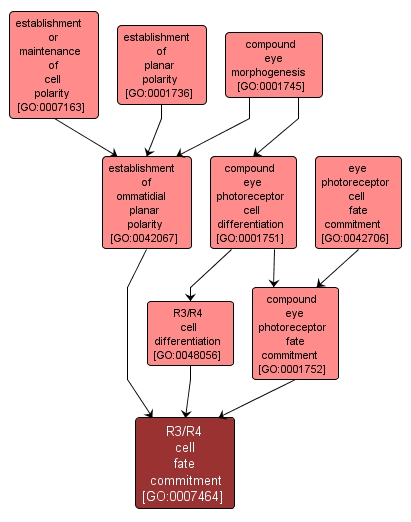GO TERM SUMMARY
|
| Name: |
R3/R4 cell fate commitment |
| Acc: |
GO:0007464 |
| Aspect: |
Biological Process |
| Desc: |
The process whereby the R3/R4 photoreceptors commit to their cell fate. R3 and R4 are paired photoreceptors which contribute the outer rhabdomeres. |
|

|
INTERACTIVE GO GRAPH
|














